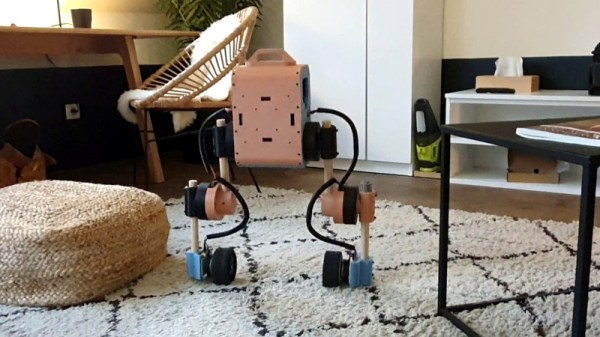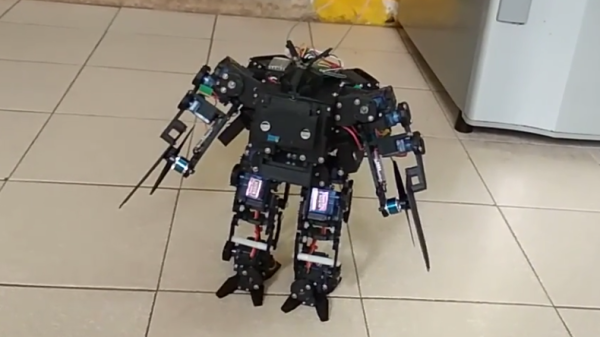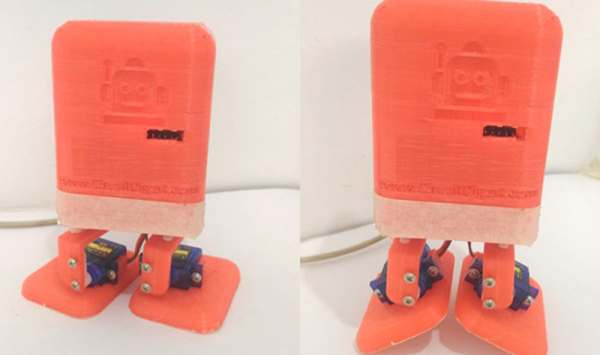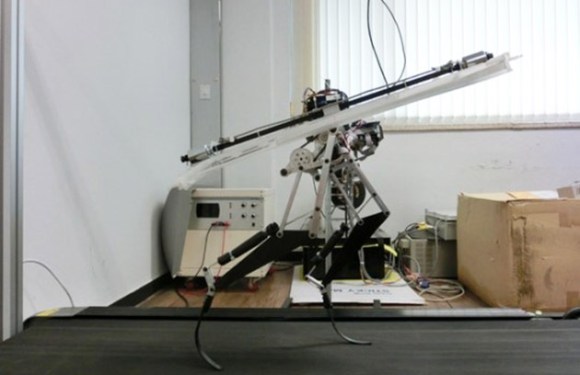We’ve seen enough DIY robotic platforms here on Hackaday to know that most of them take the literal and figurative path of least resistance. That is, they tend to be some type of wheeled rover. But of course, there are plenty of other forms of locomotion, should you want to take on something a bit more challenging.
This biped robot from [Tast’s Robots] is a perfect example. While it’s still technically wheeled, its self-balancing nature makes things quite a bit more complex. It doesn’t just stand upright either, it also has a unique ability to crouch down by rotating its motorized knees and hips. As demonstrated in the video below, it can even navigate relatively uneven terrain — pulling off such a smooth transition between hardwood and carpet is no easy feat for a self-balancing bot like this.
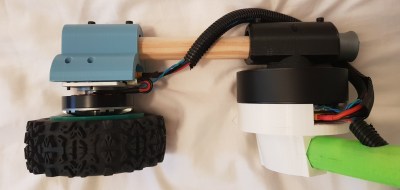 But the best part? It isn’t just fully open source, it’s also designed to be built with only the tools and capabilities available to the average home gamer. That means 3D printed components, wooden dowels, and RC car parts. Even the power supply, a Ryobi 18 V tool battery, is easy to source and relatively hacker friendly.
But the best part? It isn’t just fully open source, it’s also designed to be built with only the tools and capabilities available to the average home gamer. That means 3D printed components, wooden dowels, and RC car parts. Even the power supply, a Ryobi 18 V tool battery, is easy to source and relatively hacker friendly.
Just as impressive as the hardware is the suite of software packages developed to handle things like balancing, locomotion, and reverse kinematics. Each one is maintained and documented as their own individual Apache-licensed projects, making them far easier to utilize than they would be if it was all implemented as one monolithic system.
If you really want to ditch the wheels, we’ve seen a few biped walkers in the past. But frankly, none of them can compare to the capabilities and scope of this project.
Continue reading “Homebrew Biped Bot Shows Off Some Impressive Moves”

